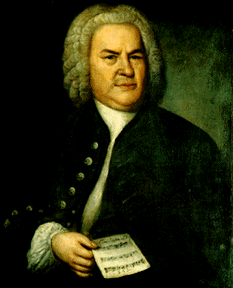Site about Music - Art & Math


 In his own time, Bach was respected as a virtuoso organ player-now he is known and appreciated for the emotional depth of his Baroque music.
In his own time, Bach was respected as a virtuoso organ player-now he is known and appreciated for the emotional depth of his Baroque music.
Johann Sebastian Bach was born in 1685 in Eisenach,Thuringia (in what is now East Germany), into a family firmly established locally as a musical one; it is reported that in some parts of Thuringia, the very word ‘Bach’ had come to denote a ‘musician’.
Johann Sebastian’s father was a good violinist and trumpeter. By the time Sebastian was ten both parents had died and he was adopted by his eldest brother Christoph, organist of church. Christoph was a skilled organist and Sebastian praised him as ‘a profound composer’. He taught Sebastian to play keyboard instruments and introduced him to the technique needed in music copying.
Bach was 15 when he left the house to take up a chorister-scholarship at the Michaelisschule, in Luneberg.
He became a member of the Matins Choir. Members of this choir were usually boys from poor families.They received free schooling, board and lodgings and were paid a small amount depending on their seniority. Bach sang in the choir until his voice broke, changing from a treble to bass baritone, then he became an instrumentalist. At school he studied Latin, Lutheranism, arithmetic, history and geography, German poetry, physics, heraldry and genealogy.
From 1702, aged 17, Bach was on his own .In August 1703, he was appointed organist of new Church in Arnstadt. He composed Toccata and Fugue in D-minor.
In 1706 Bach was obliged to find a new position at Muhlhausen . In that year he also married his cousin, Maria Barbara.
From July 1708 to December 1714 he was working as organist and concertmaster at the court of Duke of Weimar. During his Weimar period, six of his children were born. I this period he composed hundreds of pieces for solo keyboard, orchestral dance suites, trio sonatas for various instruments, and concertos for various instruments and orchestra. A master of contrapuntal technique, Bach's steady output of fugues began in Weimar. The largest single body of his fugal writing is "The well-tempered keyboard" .
The 48 Preludes and Fugues, which appared in two books, explore an infinitely wide range of fugal devices.
It consists of two collections compiled in 1722 and 1744, each containing a prelude and fugue in every major and minor key.